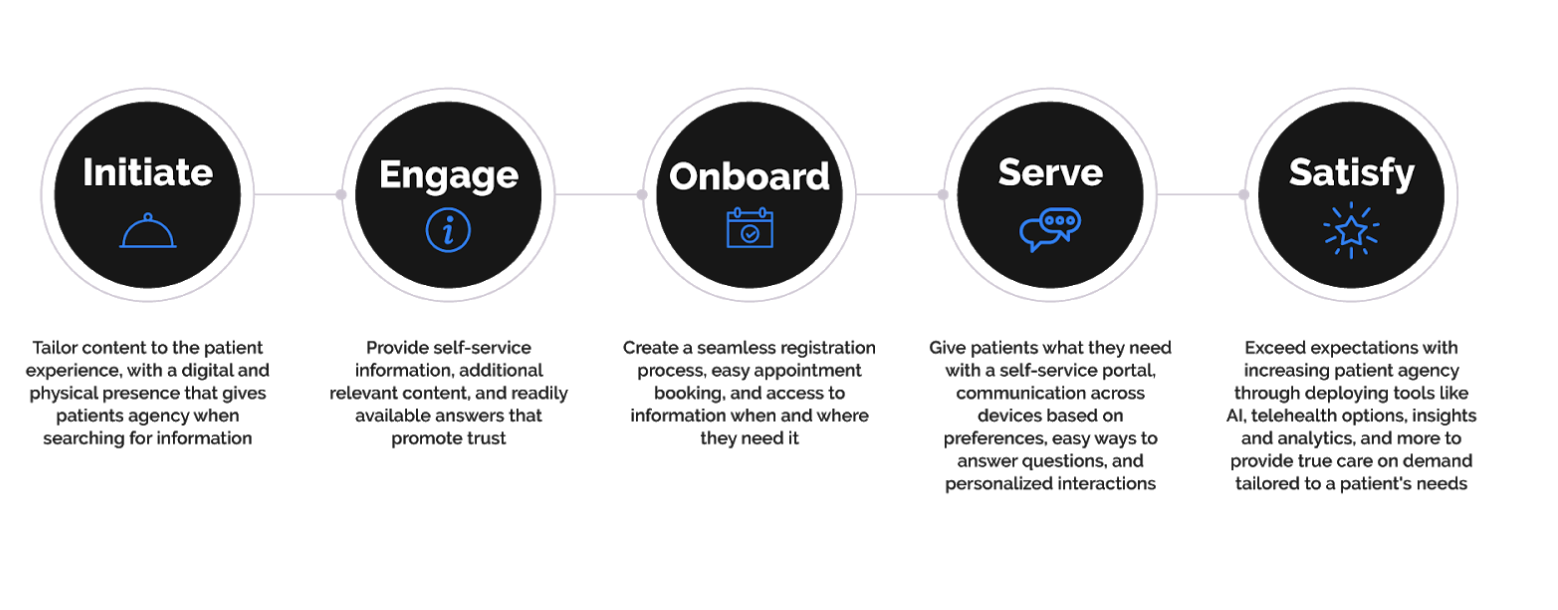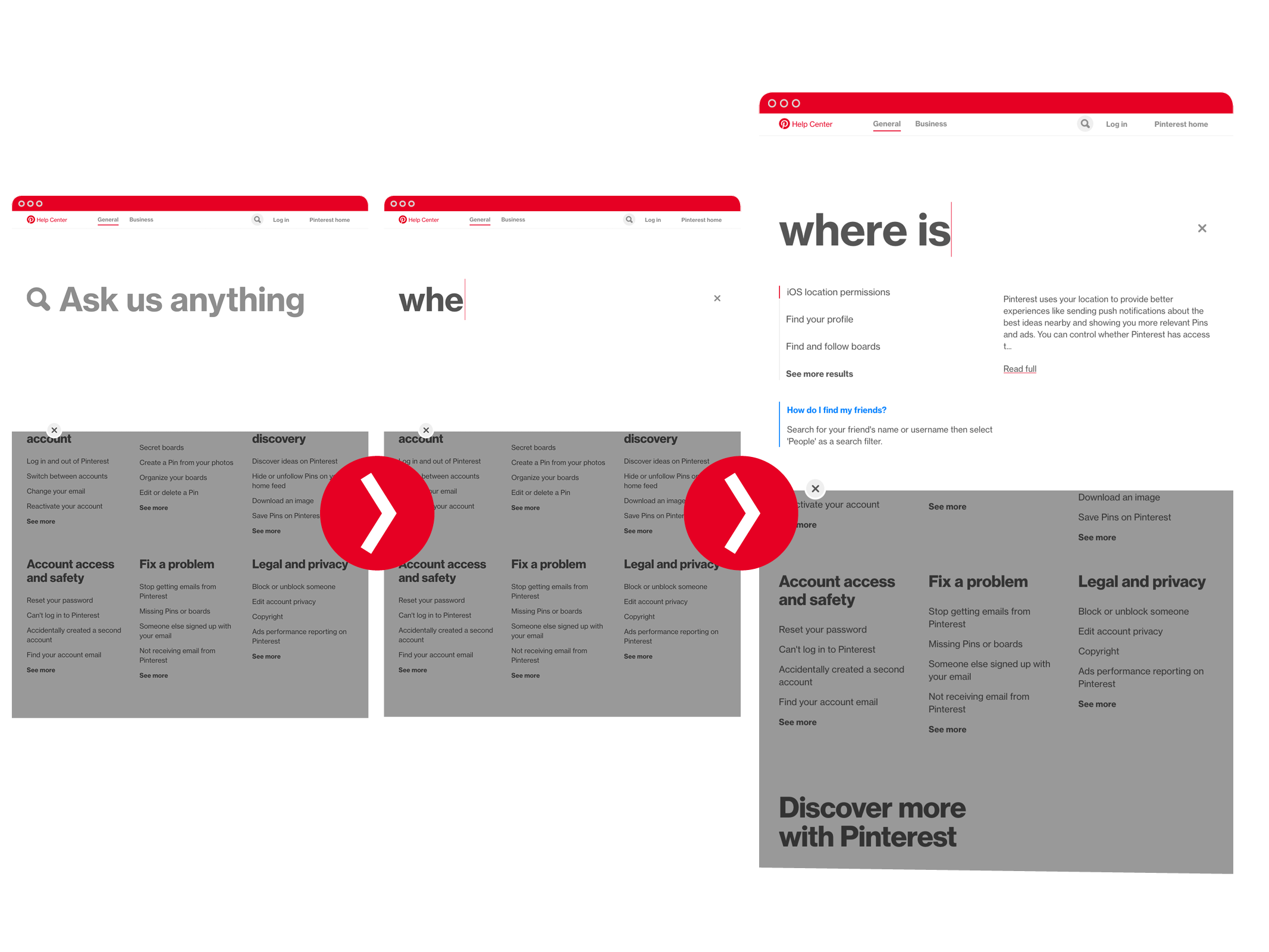Healthcare Self-Service: The Future is Now
Healthcare Self-Service: The Future is Now
Karina Schuelke | Director of Digital Strategy
January 25, 2021
It’s the future, and your healthcare organization has developed a stellar patient self-service experience. While it’s still evolving, and you have areas to tackle - including planning ongoing improvements - your patients are thrilled with their ability to get what they need when they need it. Your teams are less burdened by items patients can handle themselves - even simple interactions, like appointment scheduling, wayfinding, and general questions are either handled without your team or have become exponentially easier.
How did you get here?
While self-service is critical, the path to achieving it and what it should look like for your organization are not always easy to uncover. But the theme is clear: the future is about providing care on demand, when and where patients need it.
Let’s take a moment and look at the overall experience of the digital patient journey and the role of self-service. This is just at a high level, but this rough map indicates directions to pursue to create that powerful self-service experience and help patients get the care on demand that gives them that control.

Self-service gives patients agency and saves your organization time and effort (and money). Here are 3 key questions to consider as you plan or enhance your self-service strategy and a few inspirational ideas to get you started.
Questions to Consider
For your organization, where do opportunities exist to enhance the traditional experience with digital?
- The lines are blurring between digital and traditional - your organization can dramatically increase self-service capabilities by strategically introducing digital options to enhance, adjust, or replace traditional experiences.
Which area of the patient experience represents the largest opportunity?
- The largest opportunity is defined here as the one that, given the investment necessary to address it, will have the biggest impact on your KPIs and your strategic goals. This is the area to look for ways to increase patient agency and ways to provide care on demand.
What inspires you from other organizations that could be adapted for your circumstances and your organization?
- Looking outside of healthcare can be particularly inspirational as you seek new ideas and look for innovation you can bring to healthcare.
Here are a few ideas that are publicly available to inspire you:
Inspiration
Company Engagement and Q&A > Self-Service Knowledge Base

A few years ago, you may recall McDonald’s “Our Food. Your Questions.” campaign that allowed people to ask McDonald’s anything and get true responses, in some cases incredibly thorough ones. This allowed people to interact with the company directly and get answers to their questions, and gave McDonald’s a repository of the Q&A experience to continue to leverage over time.
Now, all that content has become a self-serve Q&A experience that can deliver direct answers to pressing questions an individual might have about McDonald’s.
AI, Search Results, and Form Submissions

On Pinterest's help.pinterest.com site, Phase2 established a flow whereby all articles were automatically fed into an AI natural language processing technology (Inbenta) for parsing, analysis, and search results delivery.
Inbenta is critical to Pinterest’s overall search functionality. For example, a feature of the help form searches Inbenta’s results based on user input. The goal is to serve up relevant content quickly, answering the user’s questions, and reducing support team workload. Decreasing help form submissions creates a better user experience while keeping down costs.
Personal, Concierge Experiences and Automation
While people often think of personalization as website-focused engagement, for organizations where a physical presence matters, robots provide a variety of opportunities for self-service or automated engagement and personalized experiences.

One famous example is Connie the Robot Concierge, made in collaboration with IBM and powered by Watson (IBM’s AI program). Currently, Connie is placed at Hilton McLean in Tysons, Virginia. It answers hotel-related questions and gives directions. To interact with guests, it can literally point in the direction when a guest asks for directions, and its eyes light up in different colors to reflect different human emotions.
This is only one example of robots being used in the travel industry. Often, travel organizations have robots for entertainment, helping passengers with airport check-ins, room service, and more.
Robots and AI provide opportunities for personalized wayfinding and more in a wide variety of in-person interactions. While they have to be deployed strategically and with clear aims, when done well they can greatly enhance the experience and even become an attraction, like Mario the Robot Receptionist did on deployment a few years ago.
Next Steps
Feeling inspired? Ready to dig in? Consider this as you go - the upsides of self-service and empowering your patients with increased urgency are hurdles well worth clearing.
We hope you enjoyed reading the Phase2 blog! Please subscribe below for regular updates and industry insights.